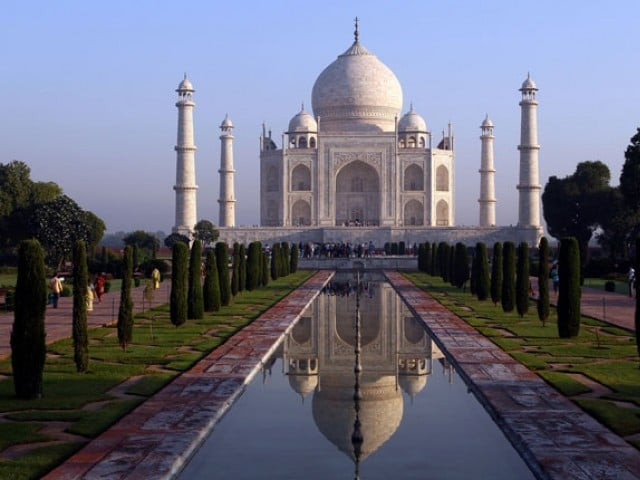Visits to Taj Mahal restricted to three hours per person
There has been no incidents due to overcrowding at the site yet

There have been no incidents due to overcrowding at the site yet. PHOTO: AFP/FILE
The Taj Mahal is a designated-gigantic white marble tomb, listed as a UNESCO World Heritage Site, with the ability to attract 50,000 visitors a day on the weekend, according to the spokesperson for the Archaeological Survey of India, which oversees the monument.
"Sometimes people end up spending a whole day at the Taj. This creates a situation where there are too many people," the spokesperson D N Dimri said.
No end to eyesores at Taj Mahal as repair work drags on
"It is being implemented so that the movement of visitors can be regulated. Day by day, the numbers of visitors are increasing. This is to ensure no untoward incidents or accidents occur."
However, there have been no incidents due to overcrowding at the site, he added.
The Taj Mahal was built in 1631 and completed in 1648 as it ordered by the Muslim Mughal Emperor Shah Jahan, it was built in memory of his third wife who died during childbirth.
Tourism Minister Alphons Kannathanam described Mahal as “India’s pride,” as it attracts at least seven millions visitors every year.
The rule will begin from April 1 and will apply to both local and international visitors, Dimri said.
Colourful makeover puts Mumbai slum on tourist map
The spokesperson stated that there was no suggestion of a cap on the number of visitors to the Taj Mahal as it would be unfair to people who traveled from far away to visit the monument a ticket.
However, he did mention about discussions regarding putting further limits on the “carrying capacity” of the Taj Mahal in the near future.
This article originally appeared on CNN.



















COMMENTS
Comments are moderated and generally will be posted if they are on-topic and not abusive.
For more information, please see our Comments FAQ